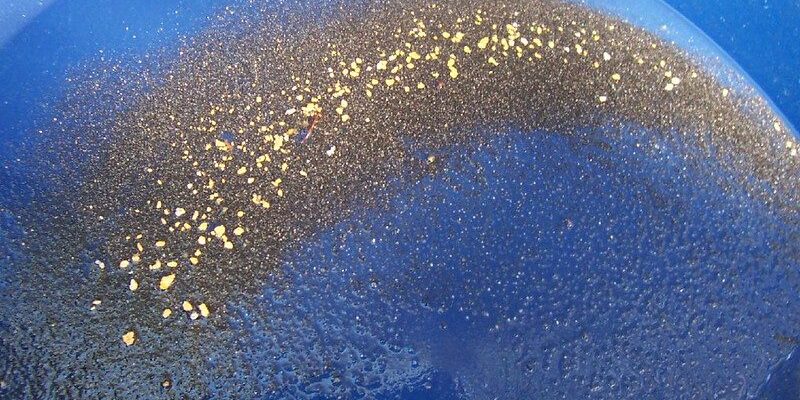IPOP LLC, the mining company associated with Rivers of Gold, has applied for a permit to mine gold using a 36-inch cutterhead dredge in the Safety Sound, about 25 miles east of Nome. Although the U.S. Army Corps of Engineers says this project is still a long way off from approval, the public comment period on the application closes on September 15th.
The last update KNOM had on the IPOP project was that the company was gathering environmental baseline data under a permit authorized by the Alaska Department of Natural Resources.
Leslie Tose a program manager with the U.S. Army Corps of Engineers, says the company did not operate its six-inch suction dredge over the winter and spring, as was previously authorized.
“On April 24th, [2020] they cancelled their core drilling program. They decided to base their mining plan on their first season’s core drilling. And in the 2019 season, they drilled 13 holes.”
– Leslie Tose
Despite accusations of IPOP representatives trespassing on land owned by Solomon Native Corporation, the company’s permit with DNR still remains intact and can be used to continue gathering core samples in the future.
Based on that one season of core drilling in 2019, IPOP believes they have enough of an indication that gold is present on their mining claims to propose this new permit application. According to the permit application, their samples produced seven total grams of gold from 323 lbs. of core samples.
This latest mining project proposal includes four main parts, which contains over 200 pages of plans and supplemental information.
“They [IPOP] have a camp at about mile 25 that they are proposing; it’s on a state parcel. And from there they are proposing to construct an access channel that is approximately 85 feet wide by ten feet deep, and approximately 3,850 feet long. The length would vary, the width would vary.”
– Leslie Tose
IPOP is also proposing discharging roughly 5,000,000 cubic yards of material into the water for that access channel, creating four disposal areas with the dredged material, and mining from a continuous trench over the course of five years. Although, the permit application goes on to say the mining project is anticipated to last ten years.
The best word to describe this proposed mining project, Tose says, is complex.
“It’s an area that has a lot of natural resources, there’s five endangered species, five kinds of salmon, and four tribes. So right there you have a tremendous amount of process involved that is external to the regular process that we [U.S. Army Corps of Engineers] go through.”
What has been reiterated to Tose many times by local stakeholders, is that many mines in Alaska occur in areas that are out of the way or remote, but IPOP’s does not. Their proposed work would take place in an estuary, which is considered very valuable habitat by the Corps.
Even with the sensitive nature of IPOP’s proposed work, Tose points out that the current public comment period does not mean the Corps has made a decision or judgment about this gold mining project. In fact, she still views this as an early stage in the permitting process.
“There are a number of inconsistencies, gaps, and missing information. And what we’re hoping, in the public comment period, is that members of the public who have professional and personal expertise can help us review this material.”
The Corps is specifically looking for feedback on the potential subsistence impacts from this project. Those types of comments can be given directly to local tribal entities like Bering Straits Native Corporation (BSNC) or Kawerak.
Given the gaps in data and missing information from IPOP’s application, Tose says it is currently unclear to her as to what the reclamation process will look like.
“They have not provided a reclamation plan and they have not stated where else they want to mine but they do state that they want to mine anywhere in their [32] claims. And they have not provided any plans for future mining, so it is unclear as to what their intentions are.”

In past encounters with company representatives from IPOP, Nome area entities like the Solomon Native Corporation have viewed IPOP’s business dealings and actions as signs that they are only interested in pursuing profits through their investors and commercial products, like the television show known as Rivers of Gold.
Beau Epstein, the IPOP representative listed as the applicant for this permit, has not returned any of KNOM’s phone calls seeking comment on this project.
According to permits IPOP has received to date from state entities like DNR, as well as the U.S. Army Corps of Engineers, the company can continue to gather more environmental data and do a test plume study while their current permit application is pending.
You can submit public comments to Leslie Tose with the Corps before the new September 15th deadline, by phone at 907 753-5515 or toll free at 1 800 478 2712, email – Leslie.W.Tose@usace.army.mil, or snail mail addressed to U.S. Army Corps of Engineers Alaska District Regulatory Division, CEPOA-RD 2204 3rd Street, Post Office Box 6898 JBER, Alaska 99506-0898.
UPDATE: The public comment period previously ended on August 31st, but the U.S. Army Corps has since extended the deadline to September 15th.
Image at top: A gold plan full of flakes, forming a River of Gold. Photo from public domain via Flickr.




